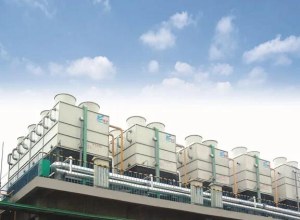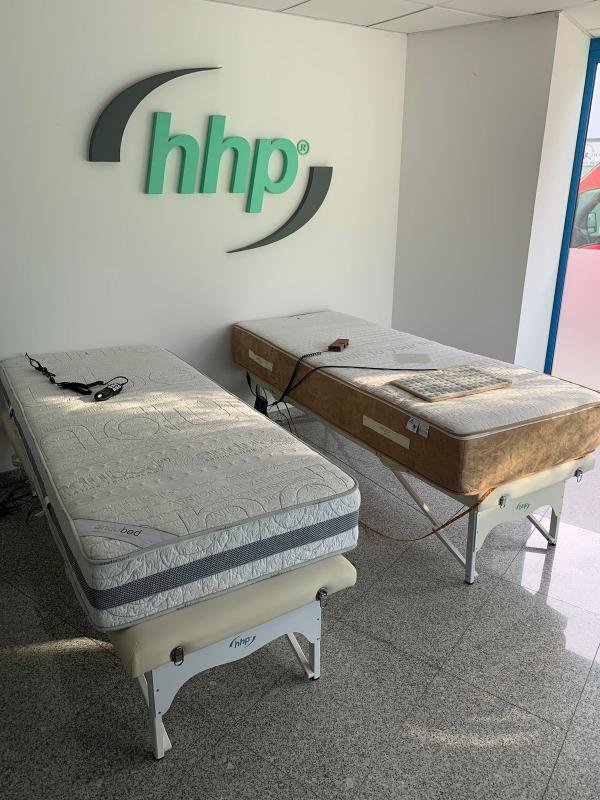Evap condenser is a type of heat exchanger used to transfer heat from process fluids to the atmosphere. Unlike a direct air-cooled condenser, an evaporative type condenser uses water as the cooling medium. The process fluid passes through a tube bundle while water is sprayed over the tubes. As the water evaporates, it removes heat from the process fluid. The cold water is then collected in a sump and pumped back to the top of the evaporative condenser cooling tower, completing the cooling cycle.
Operating Principle of Evaporative Condenser
The operating principle of an evaporative condensing unit is based on the principle of evaporative cooling. An evaporative condenser is typically made up of a tube bundle that is arranged in horizontal coils through which a warm fluid circulates. Water is sprayed over the tubes and evaporates, removing heat from the process fluid.
The latent heat required to evaporate the water comes from the heat rejected by the process fluid being condensed. As the water evaporates, it becomes saturated with heat and is collected at the bottom of the condenser. It is then pumped to the top of the condenser, where it is sprayed again to continue the heat transfer process.
Evaporative condenser types can be used in both closed and open loop systems, depending on the application. They are used in various industries to cool process fluids in refrigeration, air conditioning, and power generation applications. They offer several advantages, including high efficiency and energy savings, and are suitable for use in areas with limited space.
In summary, evaporative condensers operate on the principle of evaporative cooling, where water is used as the cooling medium to remove heat from process fluids. The cooled water is then recycled and reused, making them an energy-efficient cooling solution.
Product Structure of Evaporative Condenser
Main components
1. Coil: The coil is the main heat exchange surface of the evaporative condenser. It consists of a series of horizontal tubes with fins that increase the surface area exposed to the air and enhance heat transfer.
2. Fan system: The fan system creates a draft that drives air through the coil and provides the necessary heat transfer surface for evaporation, making it an essential component of the evaporative condenser.
3. Water distribution system: The water distribution system sprays water over the coil and uniformly distributes the water over its surface. Water distribution systems can vary from a simple gravity-fed system to a high-pressure pump system that delivers water to spray nozzles.
4. Sump: The sump is the collection basin that holds the cooled water and receives the recirculated water that is used to spray over the coil.
5. Pump: The pump is responsible for pumping the water from the sump to the spray nozzles, maintaining the required water flow rate.
6. Control system: The control system regulates the evaporative condenser's fan speed, water flow rate and temperature, ensuring that the system operates efficiently.
Features of Evaporative Condenser
01
Heat transfer: Evaporative condensers use the principle of heat transfer in order to remove heat from a process or system.
02
Water distribution system: It is crucial for an evaporative condenser to have an efficient water distribution system in order to ensure that all heat transfer surfaces are adequately covered with water.
03
Fan: Evaporative condensers have a fan that circulates air over the water distribution system and heat transfer surfaces.
04
Air inlet system: The air inlet system is designed in such a way that it allows for maximum air flow and low resistance to the airflow.
05
Water basin: An evaporative condenser has a water basin that collects hot water from the process or system and allows it to dissipate heat through evaporation.
06
Corrosion resistance: The materials used to build an evaporative condenser are often chosen for their ability to resist corrosion.
07
Water treatment system: In order to maintain the efficiency of an evaporative condenser, a water treatment system is often used to prevent mineral build-up and maintain water quality.
08
Automatic controls: Many modern evaporative condensers are equipped with automatic controls that monitor and adjust the water and air flow to ensure optimum performance.
Advantages of Evaporative Condenser
Energy efficiency: Evaporative condensers are highly energy-efficient, as they utilize the latent heat of evaporation to remove heat from the system, rather than relying solely on mechanical refrigeration.
Reduced water usage: As evaporative condensers continuously recycle water through the system, they require significantly less water than traditional cooling towers.
Lower operating costs: Due to their energy efficiency and reduced water usage, evaporative condensers can result in lower overall operating costs compared to other cooling methods.
Reduced maintenance: Because they rely on natural processes to remove heat from the system, evaporative condensers require less maintenance and have longer lifespans than other cooling systems.
Increased capacity: Evaporative condensers have the ability to handle large cooling loads and can be scaled up or down to meet changing demand.
Environmentally friendly: With lower energy usage and reduced water consumption, evaporative condensers are considered to be environmentally friendly and sustainable cooling options.
Improved air quality: Evaporative condensers can help to improve air quality by reducing the use of refrigerants and other chemicals that can be harmful to the environment and human health.
Application of Evaporative Condenser
Evaporative condensers have a wide range of applications in industries such as refrigeration, air conditioning, and power generation.
Refrigeration: Evaporative condensers are commonly used in commercial and industrial refrigeration systems, including food processing facilities, supermarkets, and cold storage warehouses. They are used to condense refrigerant gases, such as ammonia or freon, and remove heat from the process.
Air conditioning: Evaporative condensers are also used in air conditioning systems to reject heat from the air conditioning process and improve system efficiency. They are often used for large central air conditioning systems in commercial buildings.
Power generation: Evaporative condensers are used in power plants to cool the condenser water in a steam power cycle. They are used to remove heat from the steam turbine and condense the steam back into water to be reused in the cycle.
Industrial processes: Evaporative condensers have found applications in industrial processes such as chemical and petrochemical processing, oil refining, and paper manufacturing. They are used to cool process fluids and improve process efficiency.
In summary, evaporative condensers are widely used in refrigeration, air conditioning, power generation, and industrial processes where efficient cooling and heat rejection are essential.
Ubicación : Luoyang CBD, No.288 of Kaiyuan Avenue, Luoyang, Henan, China, 471000 luoyang,
Persona a contactar : hua Long, 037967891167












